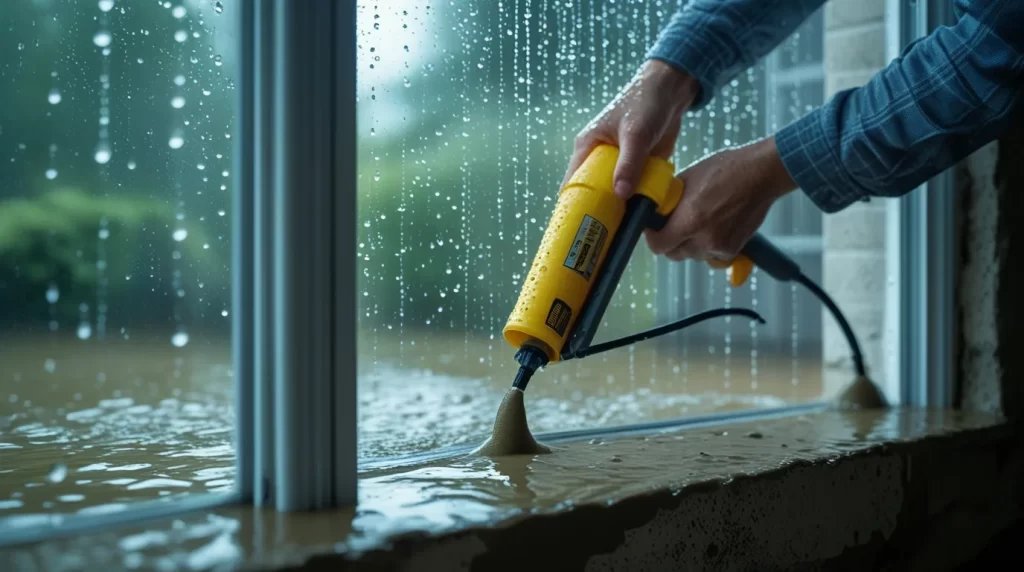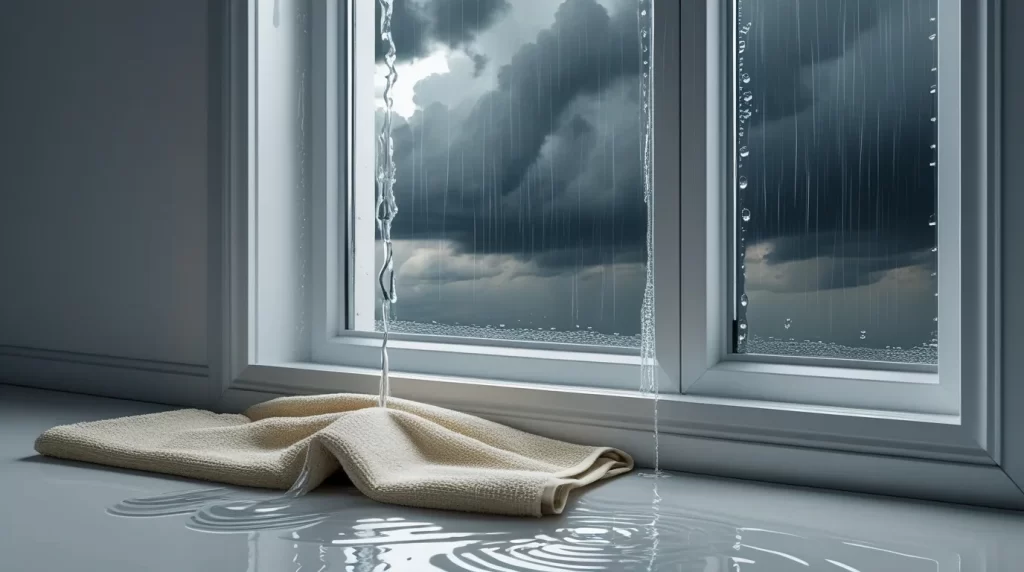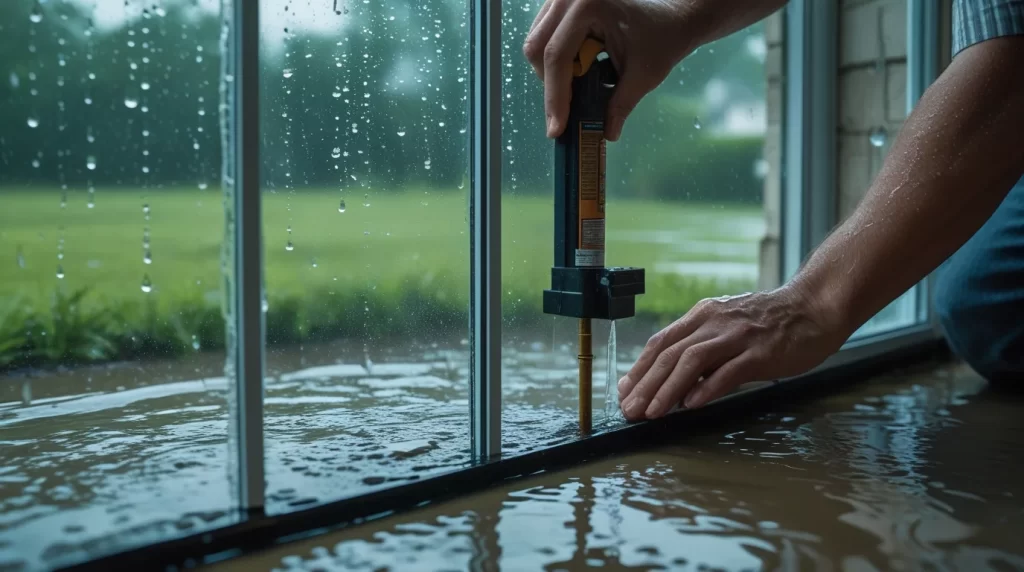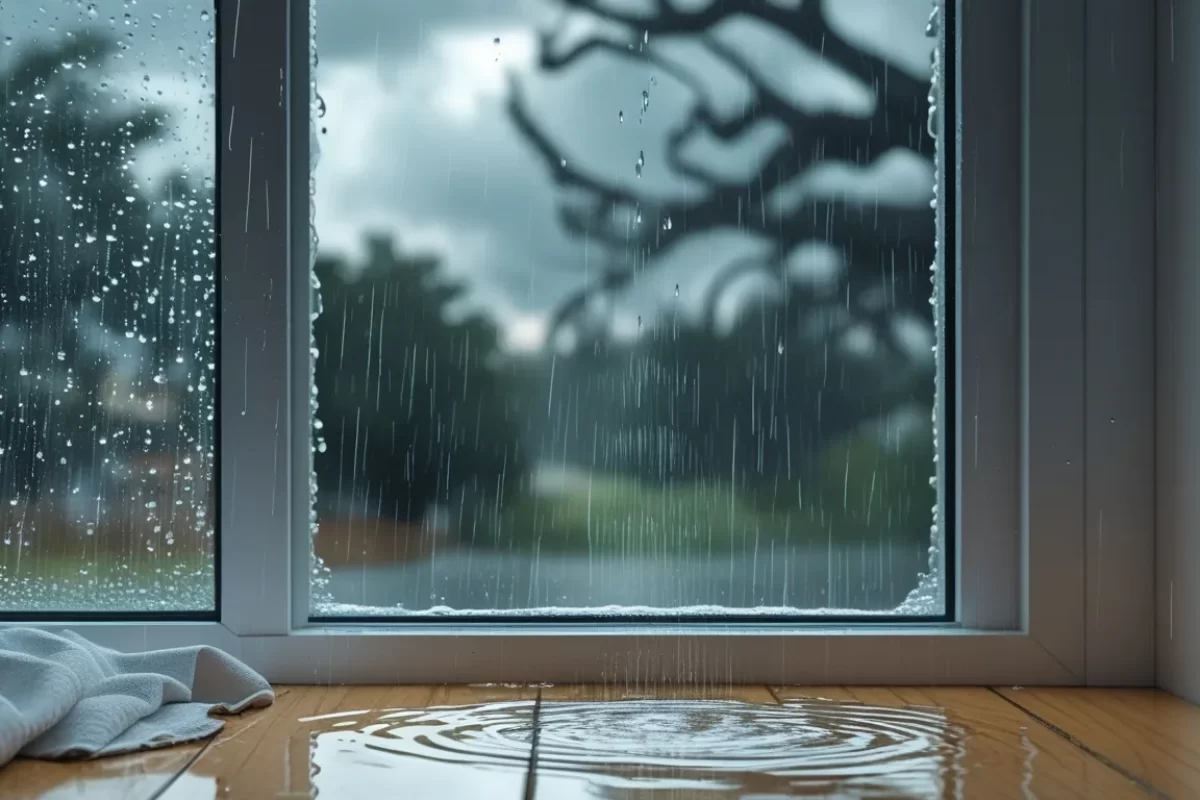Why Leaky Windows Are a Bigger Problem Than You Think
A small leak might not seem like a big deal, but it can cause major problems. Water can get into your walls, floors, and furniture. This might lead to mold, wood rot, and higher energy bills. Many people do not know how to fix leaking windows during heavy rain, so the damage gets worse over time. Even a little water can ruin your home if it keeps coming in again and again.
What Causes Windows to Leak When It Rains?
Windows can leak for many reasons. Sometimes the seal around the frame wears out. Other times, rainwater slips in through tiny gaps at the top or bottom. Cracks in the wall or window sill can also cause leaks. If your home’s siding is damaged or your roof has issues, that water can travel and come in through the windows too. Leaking windows often show up during storms because the rain hits harder and from more angles.
How to Fix Leaking Windows During Heavy Rain
Start by drying the area completely. Clean off any dirt or loose paint. Use silicone caulk to seal cracks and gaps. It’s flexible and water-resistant. Press it into the edges where the window meets the frame or wall. You can also use weatherstripping around the moving parts of the window. Make sure the outside drainage is clear, too. If rainwater pools around the window, it can find a way inside. Doing all this can help stop future leaks.

Repair Options for a Window Leaking from the Top
Water at the top often means the flashing above the window is failing. Flashing is a thin metal piece that pushes water away from your home. If it’s missing or damaged, rain can slip right through. Another issue might be your siding or roof above the window. If water rolls down the wall, it can sneak in through small openings. You might need to replace or repair the flashing, add sealant, or check the gutters for overflow problems.
How to Seal Leaky Window Frames Without Replacing Them
You don’t always need new windows. Sealing can often stop the leak. First, clean the area well. Then, use high-grade exterior caulk to seal gaps where the frame meets the wall. Use foam weatherstripping for spots where the window opens. For a better seal, apply window insulation film over the glass. These steps block water and air from slipping in. If wood around the frame is soft or rotting, you might need to patch or reinforce it before sealing.
What to Do When Your Basement Windows Are Leaking
Basement window leaks are tricky. They usually come from poor drainage outside. Make sure the ground slopes away from your home. Clear out window wells so water doesn’t collect there. You can also install a cover over the well to keep rain out. Inside, seal the frame with caulk and use concrete patch if water is getting in through cracks. If water keeps coming back, consider adding a sump pump or calling a pro for help.

Prevent Future Window Leaks with These Simple Maintenance Tips
Check your windows every season. Look for gaps, cracks, or damaged caulking. Replace worn-out weatherstripping. Clean your gutters so rain doesn’t spill over and run down your walls. Trim plants near windows so moisture doesn’t collect. If you notice signs of moisture, act fast. Keeping your windows in good shape helps protect your whole home. Small checks can save you from big repairs later on. If your windows are leaking or you want peace of mind before the next storm, reach out to Repair Champions. Our team is ready to help fix the problem quickly and protect your home from future rain damage.
Signs Your Window Might Be Letting Rainwater In
-
Water stains: Look for yellow or brown marks on walls or around the window after rain.
-
Peeling paint: Bubbling, cracking, or soft paint may signal hidden moisture.
-
Damp surfaces: Run your hand along the sill or wall—cold or wet areas suggest a leak.
-
Dripping water: Visible puddles or drips during storms are a clear warning sign.
-
Musty smell: A moldy odor near the window could mean hidden moisture buildup.
-
Soft wood: Tap the trim or sill—if it feels spongy or swollen, water may be inside.
-
Strange sounds: Tapping or dripping during rain may be water seeping through.
These signs may seem small, but they can lead to big problems if ignored. If you notice any of them, take action. Even small leaks can cause big repairs later.
Temporary Fixes for Leaking Windows in a Storm
When heavy rain causes water to leak through your window, you might not be able to fix it right away, but you can still take quick steps to limit the damage. Start by placing towels, rags, or a sponge on the windowsill to soak up the water, and tape a plastic sheet or trash bag over the inside of the window to act as a barrier. Use weatherproof or duct tape to seal visible cracks, especially around the window edges, and apply waterproof caulk if possible; just keep in mind it may not last on wet surfaces. For sliding windows, placing a towel or foam along the bottom track can help block incoming water. Keep the area dry, set a bucket nearby to catch drips, and move furniture or rugs away from the leak. These temporary fixes won’t solve the issue permanently, but can help protect your home until the rain stops.
Once the storm is over and everything is dry, you can plan a more lasting repair. But in the moment, these quick fixes help.

How to Inspect a Window for Hidden Leaks
Inspecting your window for leaks is easier than it sounds; it just takes a little time and attention. Start inside your home by examining the window frame, sill, and surrounding wall for cracks, stains, or damp spots; if the area feels cool or damp to the touch, that may signal a leak. Press gently on the trim to see if it’s loose or soft, which could indicate water damage, and watch for peeling paint or mold. At night, shine a flashlight from inside toward the window someone outside can see light seeping through, Small gaps may be letting in air and moisture. Then, head outside and inspect the frame and siding for cracks or gaps, especially where the window meets the wall and near the top, where flashing or sealant may be missing or worn. Don’t forget to check the gutters and roof above the window; overflowing water from clogs or poor drainage can easily find its way into the frame below.
Doing these checks during dry weather is best. That way, you can fix any issues before the next storm.
When to Call a Professional for Window Leak Repair in Irvine, CA
Sometimes, fixing a leaky window is too big a job to handle alone. If you’ve tried sealing, patching, or caulking and water still gets in, it’s time to bring in the pros. Call a professional if you see mold growing, if your walls are soft or discolored, or if the leak gets worse with every storm. Also, if your windows are old, hard to open, or show signs of rot, a repair expert can check if they need more than just a seal. Repair Champions is your trusted team for window leak repairs. We’ve helped many homeowners protect their homes from water damage. Our skilled team knows how to spot hidden problems and fix them for good. We’ll look at the window, the wall, the siding, and even the roof above. Then, we’ll make a plan that fits your needs and your budget. Our goal is to stop leaks fast and keep your home safe and dry.
Don’t wait until the next storm to fix a leak. Reach out to Repair Champions for dependable, friendly service.













